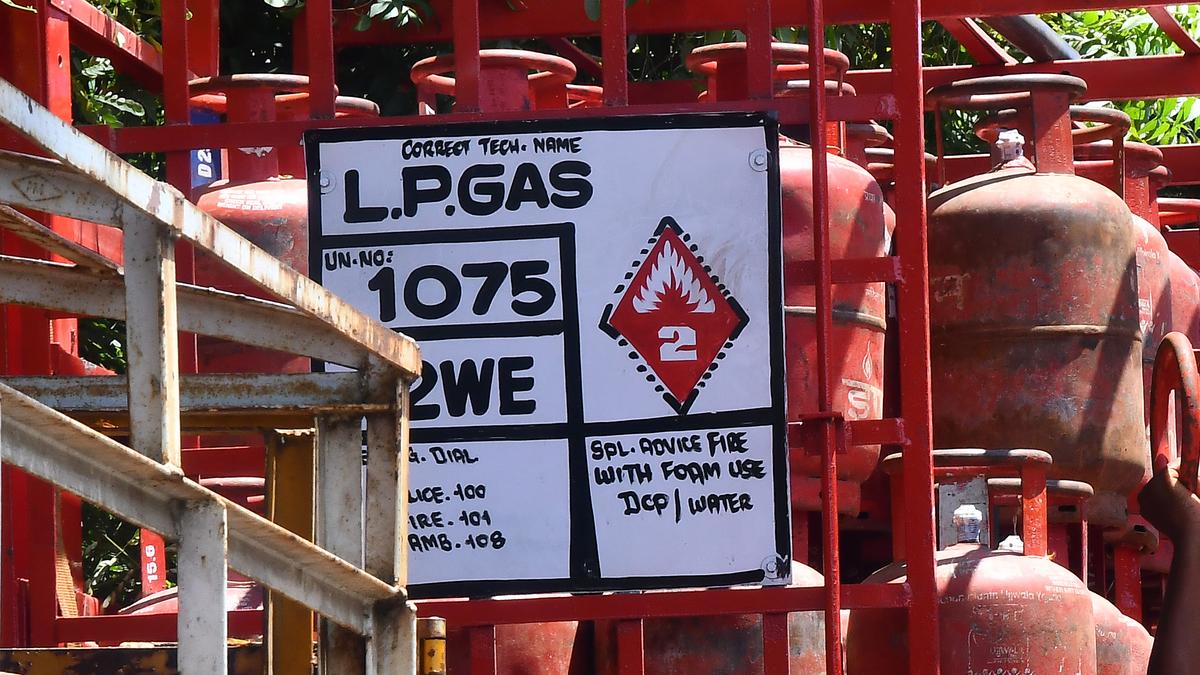The Impact of Pradhan Mantri Ujjwala Yojana in Jammu and Kashmir (GS Paper 2, Polity)

Context
- India is home to approximately 681 million people who still rely on solid fuels for cooking, which leads to significant health and environmental concerns.
- The Pradhan Mantri Ujjwala Yojana (PMUY), launched in 2016, aims to address these issues by providing subsidized LPG connections to economically disadvantaged households.
- As of now, the government has distributed over 10.3 crore LPG connections under PMUY.
- This study evaluates the impact of this initiative in Jammu and Kashmir (J&K), focusing on its role in improving clean fuel adoption and health outcomes in rural areas.
Study Overview
A primary survey was conducted across 48 villages in the Kulgam and Rajouri districts of J&K, which are considered relatively disadvantaged. The survey involved 820 households, ensuring representation from different economic categories—Above Poverty Line (APL), Below Poverty Line (BPL), and Antyodaya Anna Yojana (AAY) households. Comprehensive questionnaires were administered to female household members, who were responsible for cooking, to understand the adoption and impact of LPG use.
Key Findings
LPG Connection Adoption
-
- 85.07% of rural households in J&K have official LPG connections.
- 68% of these connections were procured under PMUY.
- Only 4.41% of households in remote areas (such as Rajouri) do not have access to LPG, while 10.53% rely on unofficial LPG connections.
- Despite high LPG adoption, 92% of households still use traditional chulhas (stoves) for cooking, with 85% engaging in fuel stacking (using both LPG and solid fuels). This indicates that LPG use is often supplementary rather than exclusive, driven by cultural practices and affordability concerns.
LPG Usage and Consumption Patterns
-
- The average LPG consumption per household in the last six months is 3.56 cylinders.
- In Kulgam, PMUY beneficiaries consumed 3.54 cylinders on average, while Rajouri had a slightly lower consumption among PMUY beneficiaries compared to non-PMUY households.
- Despite LPG adoption, solid fuel use remains significant, with an average consumption of 226 kg of firewood per household over six months.
Health Benefits of PMUY
-
- PMUY’s primary goal is to reduce the health burden on women, particularly from indoor air pollution caused by traditional cooking methods.
- Households in Kulgam that adopted LPG under PMUY reported significant health improvements. For example, among BPL households, respiratory problems like coughing, chest infections, and headaches were reduced after switching to LPG.
- In BPL households, the incidence of coughing dropped from 24% in non-PMUY households to 21% among PMUY beneficiaries. In AAY households, the decrease was even more notable, from 13% to 10%.
Influence of Additional Appliances and Education on Health
-
- Households using additional appliances like rice cookers showed better health outcomes, with a 20% reduction in coughing compared to non-beneficiaries.
- Secondary education among the main cook was associated with improved health, with BPL households reporting a 4% incidence of chest infections when the cook had at least secondary education, compared to higher rates in less educated households.
Barriers to Exclusive LPG Use
Lack of Awareness
-
- Many households remain unaware of the health risks associated with solid fuel use. Around 47% of surveyed households lacked awareness about the dangers of cooking with solid fuels like wood and coal.
- Communication gaps are evident, with 64% of households lacking a TV, and 33% of female cooks without a mobile phone, hindering the dissemination of information on the benefits of LPG.
Financial Constraints
-
- Affordability remains a significant barrier to exclusive LPG use. Despite initial connections being subsidized, the cost of refilling LPG cylinders is still a major financial burden for many households, leading to fuel stacking.
- 85% of households in the survey reported using both solid fuels and LPG, primarily due to the high cost of refills, which undermines the potential health and environmental benefits of exclusive LPG adoption.
Way Forward: Key Recommendations
Raising Awareness
-
- To increase LPG adoption and reduce solid fuel use, targeted awareness campaigns are essential. These should focus on educating rural households about the health benefits of LPG, especially through community-level outreach and engagement.
- Media campaigns leveraging both traditional and modern platforms (like radio, TV, and mobile-based solutions) can bridge the information gap, particularly for households without internet access or modern appliances.
Financial Support for Refills
-
- To make LPG use more financially viable, the government should consider providing additional subsidies or refill vouchers for low-income households. This could significantly reduce the practice of fuel stacking, enabling families to rely solely on LPG for cooking.
- Additionally, subsidized access to modern cooking appliances like rice cookers and stoves can further encourage exclusive LPG usage.
Improving Infrastructure and Distribution
-
- Expanding the network of LPG distribution points in rural and remote areas, particularly in regions like Rajouri, would improve accessibility and convenience for beneficiaries.
- Local entrepreneurship programs could support small businesses to set up refill stations or supply chains in remote regions, ensuring consistent and affordable LPG access.
Conclusion
- The Pradhan Mantri Ujjwala Yojana (PMUY) has significantly improved LPG access in Jammu and Kashmir, leading to noticeable health benefits and cleaner cooking practices.
- However, barriers such as lack of awareness, cultural attachment to traditional fuels, and financial constraints continue to limit the exclusive use of clean cooking fuel.
- To achieve greater success, focused efforts on awareness, affordable refills, and better access to modern appliances are necessary.
- These steps will help ensure that PMUY not only improves household energy access but also contributes to better health, environmental sustainability, and quality of life for the people of Jammu and Kashmir.


